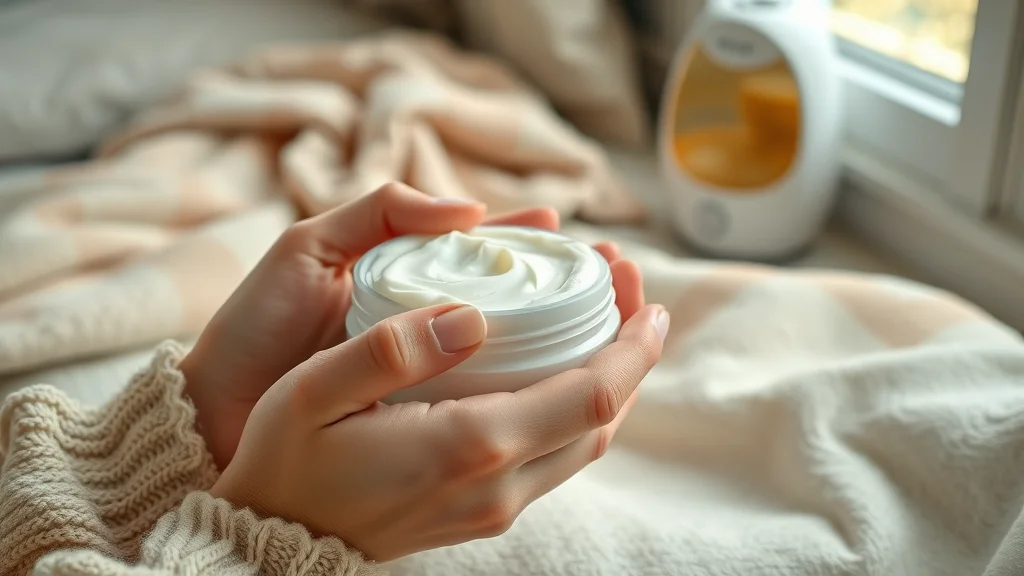Did you know that up to 80% of people experience worsened dry skin during the winter months due to a weakened skin barrier? Cold air, low humidity, and indoor heating strip your natural oils faster than you might expect, leading to irritation, flaking, and even premature fine lines. But the good news: you can protect your skin all year long by learning how to winterize your skin and adapt your skincare routine for these chilly months. This comprehensive guide breaks down the real science and expert steps that will keep your skin hydrated, resilient, and glowing—even in the harshest winter weather.
Why You Need to Winterize Your Skin: Surprising Facts About Winter Skin Damage
Every winter, millions notice sudden shifts in their skin’s texture, moisture, and overall health. But these changes aren’t just mild annoyances; they’re physical indicators that your skin barrier is under stress. When temperatures drop and the air becomes drier, you lose more water through the skin, a phenomenon called transepidermal water loss. Heated indoor environments only make low humidity worse, leaving your skin parched. Compromised moisture barriers can result in dry skin, sensitive skin, itchy patches, and increased irritation to products—even for those who don’t typically struggle with skin issues year long. Without a deliberate plan to winterize your skin, you risk cumulative damage such as cracked skin, uneven tone, and even an uptick in fine lines and wrinkles. Fortunately, by adjusting your skincare routine ahead of the coldest months, you shield your skin all year and help maintain its healthy, radiant glow. The best time to start? Before you experience that first tight, dry feeling after a hot shower or walk in the cold air.

What You'll Learn
The science behind the need to winterize your skin
Core steps for a winterized skincare routine
Essential tips for preventing dry skin and irritation
Expert advice and actionable lists to protect your skin barrier
Understanding the Skin Barrier & How to Winterize Your Skin
Defining 'skin barrier' and why it matters
How cold weather, hot water, and dry air impact your skin barrier
Links between dry skin and seasonal changes
Your skin barrier is your body’s frontline defense, a thin outer layer—also called the stratum corneum—composed of skin cells and natural oils that retain hydration and keep out pollutants. During winter months, exposure to cold air, hot water from long showers, and persistently low humidity undermine this barrier, causing small cracks and an increased loss of moisture. These cracks not only allow water to escape but also let in irritants, which is why many suffer from a cycle of dry skin, redness, and sensitivity during this season. Even if you maintain the same routine year long, winter conditions accelerate the breakdown of your skin’s protective layer, making targeted adjustments crucial for optimal skin health all year.
"Up to 80% of people experience worsened dry skin during winter due to compromised skin barriers." — Dermatology Journal
If you’ve ever noticed your skin looking dull, rough, or flaky as soon as temperatures drop, you’re feeling the direct impact of environmental stressors on your moisture barrier. The first step to resilient skin is understanding this layer—not just as the surface of your skin, but as a living shield that depends on proper care. By learning to winterize your skin, you can protect your natural oils and keep your skin hydrated and comfortable even when conditions are most challenging.
Step-by-Step Winterize Your Skincare Routine
Gentle cleansers vs. harsh soaps for winter skin
Incorporating hydrating toners and serums
Layering products in your skincare routine to winterize your skin
Reevaluating your skincare routine is the foundation for winterizing your skin barrier. The first rule: ditch any harsh soaps that strip natural oils and choose a gentle, non-foaming cleanser. Look for ingredients like glycerin and ceramides, which replenish rather than deplete your skin. Cleansing should focus on removing impurities while preserving your moisture barrier—so limit facewashing to twice a day and use warm water instead of hot water to prevent dehydration. Once you’ve cleansed, apply a hydrating toner or hydrating serum featuring ingredients such as hyaluronic acid, which binds water to the skin cells and delivers an instant moisture boost.

The next step is product layering, a practice that helps winterize your skincare routine by trapping hydration and protecting against environmental stress. Dot a light serum or essence on damp skin, followed by a cream or rich moisturizer. Oils and ointments can be used as a final layer to lock in this moisture for maximum effect. By carefully building your routine in this order, you prepare your skin barrier to handle winter’s harsh elements. Always listen to your skin all year long by adjusting layers based on your skin’s daily needs. Avoid over-exfoliating, as this can strip away healthy skin cells and damage your moisture barrier—especially when skin is already vulnerable in the winter months.
Comparison Table: Summer vs. Winter Skincare Routine | ||
Step |
Summer |
Winter |
|---|---|---|
Cleansing |
Gel cleansers; lighter formulas |
Gentle cream cleansers; avoid harsh soaps |
Moisturizing |
Gel or oil-free moisturizers |
Cream, ointment-based, extra moisture formulas |
Serums |
Brightening, antioxidant-based |
Hydrating serums (hyaluronic acid, ceramides) |
Sun Protection |
Daily SPF 30 or higher |
SPF 30 or higher, even when cloudy |
Exfoliation |
Weekly gentle exfoliation |
Limit exfoliation to prevent barrier damage |
Extras |
Mattifying products |
Oils, balms, humidifier for indoor hydration |
Moisturizing Strategies: Preventing and Treating Dry Skin
Choosing moisturizers: ingredients to look for (ceramides, hyaluronic acid, etc.)
Effective application techniques — referencing the 3-minute rule for moisturizer
Using oils and ointments to lock in hydration
Choosing the right moisturizer is key to preventing and treating dry skin during winter. Look for products rich in ceramides—these help reinforce your skin’s moisture barrier by filling gaps between skin cells—and humectants like hyaluronic acid and glycerin, which draw water into the skin. For extra moisture, opt for ointments and creams with shea butter, squalane, or dimethicone, and avoid lightweight gels that may not last in dry winter months. If you have sensitive skin, fragrance-free and hypoallergenic options are safest as they minimize risk of irritation.

Application techniques are just as important as product selection. Dermatologists recommend the 3-minute rule: apply your moisturizer within three minutes of bathing or washing to trap existing moisture before it evaporates. Gently pat—don’t rub—your skin dry, leaving it slightly damp, and then apply moisturizer in upward strokes, focusing on dry spots and areas prone to irritation. Sealing everything in with a thin layer of facial oil or ointment at night can provide added protection against moisture loss, especially if you sleep in a dry environment. Using a humidifier in your bedroom further supports your skin’s ability to retain water, combatting low humidity and the effects of indoor heating. When you blend these strategies, you’ll notice softer, smoother, and visibly healthier skin—even when it’s freezing outside.
Common Mistakes When You Winterize Your Skin
Overusing hot water and its effect on dry skin
Skipping SPF in your skincare routine during winter
Ignoring subtle symptoms of a compromised barrier
Many people accidentally sabotage their efforts as they winterize their skin. One of the most common mistakes is overindulging in hot water—prolonged hot showers or face washing may feel soothing in the cold, but they strip away natural oils, quickly leading to dry skin and weakened moisture barrier. Instead, use warm water when cleansing and keep showers brief. Another frequent oversight is skipping sunscreen. Although UV rays can feel less intense during the winter months, sun damage is a year-round threat. UV exposure in the winter—especially when reflected off snow—can worsen fine lines and leave the skin more prone to barrier breakdown. Make SPF a non-negotiable step in your routine, even if skies are cloudy.
Short demonstration: How to minimize damage from hot water in your winter skincare routine
Finally, don’t overlook the small but telling signs of a compromised skin barrier: persistent redness, flakiness, or a burning sensation can all indicate deeper damage. Taking prompt, targeted action and regularly reviewing your skincare routine will help protect your skin and keep it at its best throughout the changing seasons.
Essential Nutrients: Supporting Your Skin Barrier from Within
Key vitamins to prevent dry skin (addressing vitamin deficiency and dry skin in winter)
Foods and supplements supporting skin health
Lifestyle factors influencing your skincare routine
Winterizing your skin isn’t just about what you put on your skin—it’s also about what you do from within. Vitamins D and E are vital for keeping skin hydrated and supporting cell production, especially as cold weather and less sunlight increase the risk of deficiency. Ensuring you get enough vitamin D—through safe sunlight exposure, diet, or supplements—can make a dramatic difference in the appearance and function of your skin. Vitamin E acts as an antioxidant that bolsters your skin barrier and reduces inflammation from seasonal changes. Nutrition-packed foods like salmon, avocado, nuts, and leafy greens deliver these key nutrients and more, making them excellent winter staples. Healthy fats from these foods also help your skin stay soft and resilient, protecting the skin barrier and reducing dryness.

"Vitamin D and E play a crucial role in maintaining a healthy skin barrier, especially in winter." – Board-Certified Dermatologist
Lifestyle adjustments round out your strategy to winterize your skin. Aim to drink enough water throughout the day—even mild dehydration can show up as dryness, dullness, and tighter skin. Managing stress and prioritizing good sleep encourage healthy skin cell turnover and repair. And remember, a winterized skincare routine isn’t effective if you neglect the power of nutrients and healthy habits that work synergistically from the inside out.
Expert-Recommended Products to Winterize Your Skincare
Best cleansers, moisturizers, and serums for winter
How to select the right products for your skin type
Finding the right products is crucial to effectively winterize your skincare routine. Start with gentle, hydrating cleansers—look for options labeled “fragrance free” and “for sensitive skin” to avoid triggering irritation. Cream-based cleansers infused with ceramides or hyaluronic acid can cleanse and hydrate at the same time. For moisturizers, thicker creams or ointments containing squalane, shea butter, and dimethicone provide a more effective seal against dry winter air. Serums are also a must-have: hyaluronic acid and niacinamide serums boost hydration and strengthen the moisture barrier. When choosing products, always consider your skin type: oily skin may still need extra moisture but in lighter layers, while sensitive skin types need minimal fragrances and soothing, non-comedogenic formulas. If you’re ever unsure, don’t hesitate to schedule an appointment with a board-certified dermatologist—personalized advice is the most effective route to radiant, healthy winter skin.
Comparison of Top-Rated Winter Skincare Products and Their Benefits | ||
Product Type |
Recommended Ingredient |
Benefit |
|---|---|---|
Cleanser |
Ceramides, glycerin |
Gently cleans without stripping natural oils |
Moisturizer |
Squalane, shea butter |
Locks in moisture and repairs skin barrier |
Serum |
Hyaluronic acid, niacinamide |
Hydrates and soothes, enhances elasticity |
Sunscreen |
Broad spectrum SPF 30+ |
Shields from UV rays even in low winter sun |
Oil/Ointment |
Mineral oil, petrolatum |
Creates a barrier to lock in hydration overnight |
Dermatologist’s Product Picks: How to Winterize Your Skincare Routine
Routine Adjustments: How Often Should You Winterize Your Skin?
How frequently to update your skincare routine
Seasonal schedule and reminders — when to schedule an appointment with a skincare specialist
Your skin’s needs aren’t static—even the best skincare routine should adapt seasonally. As temperatures drop, begin to incorporate richer textures and more layers in your regimen; as humidity rises in spring, return to lighter formulas. Most dermatologists recommend reviewing and updating your winterize your skincare routine at least every three months. Set digital reminders or mark your calendar to check your products, evaluate new symptoms, and make necessary swaps. If you’re unsure whether your changes are working or you see persistent irritation, don’t wait to schedule an appointment with a skincare expert. Proactive consultations and professional advice can make the difference between struggling with chronic dryness and enjoying healthy, comfortable skin all year long.

Lists: Quick-Action Tips to Winterize Your Skin
Patch test new moisturizers
Avoid hot water; use lukewarm instead
Apply moisturizer within 3 minutes of bathing
Switch to fragrance-free products
Use a humidifier in your bedroom

People Also Ask: Winterize Your Skin FAQs
What is the 4 2 4 rule in skincare?
Answer: The 4-2-4 rule is a cleansing method popular in K-beauty routines, involving 4 minutes of oil cleansing, 2 minutes with a foaming cleanser, and 4 minutes rinsing to effectively winterize your skin and minimize dry skin.
What vitamin deficiency causes dry skin in winter?
Answer: Deficiency in vitamin D or vitamin E can contribute to dry skin in winter. Ensuring adequate intake helps support your efforts to winterize your skin and strengthen your skin barrier.
What is the 3 minute rule for moisturizer?
Answer: The 3-minute rule recommends applying moisturizer within three minutes of bathing or cleansing. This helps lock in maximum hydration as part of your winterized skincare routine.
How to maintain your skin in winter?
Answer: Maintain your skin in winter by using gentle cleansers, rich moisturizers, and SPF, and by avoiding hot water. Regularly update your skincare routine to keep your skin barrier strong and resilient.
Key Takeaways for Anyone Looking to Winterize Your Skin
Plan ahead, personalize your routine, and nourish your skin inside and out. Stay vigilant about hydration, ingredient choices, and lifestyle, and adjust your approach as the seasons change. Small steps now mean resilient, glowing skin all winter—and beyond.
Ready to Winterize Your Skin? Schedule an Appointment with a Skincare Specialist Today
Ready to elevate your skincare routine for the season? Schedule an appointment with a skincare specialist and protect your skin barrier for a beautiful, comfortable winter!
 Add Row
Add Row  Add
Add 



